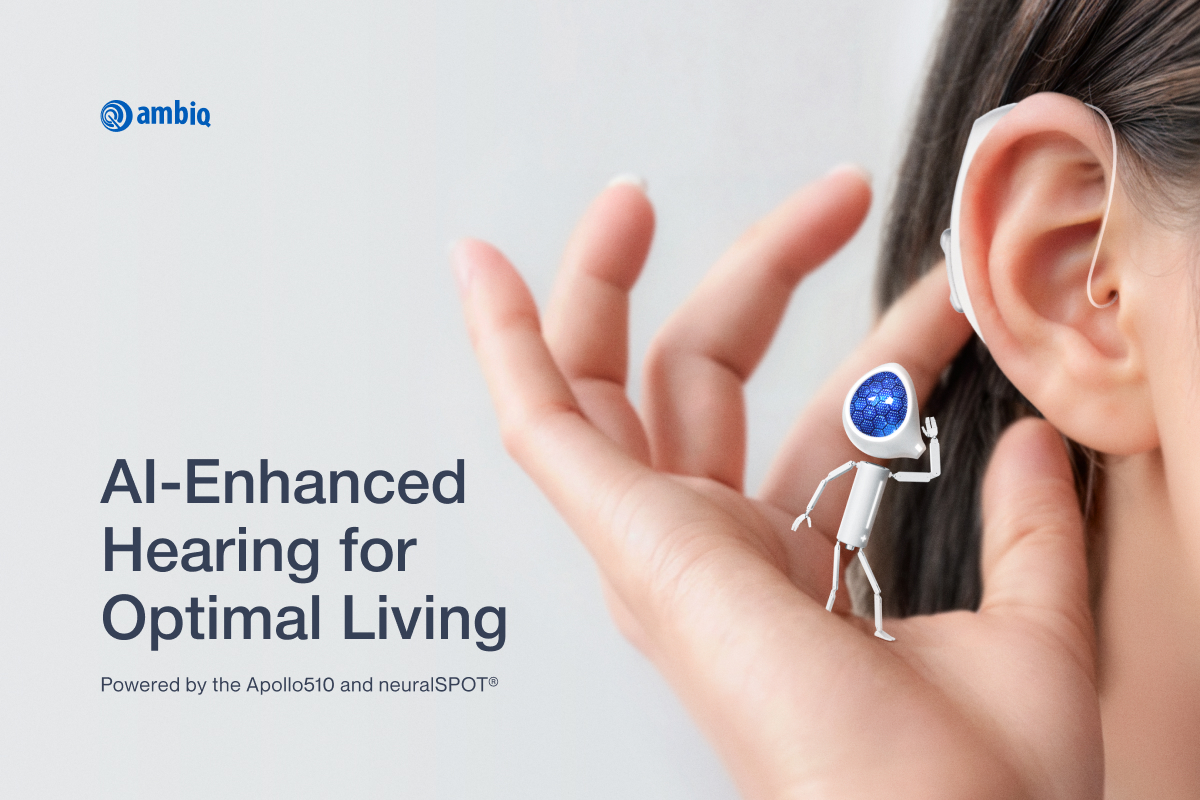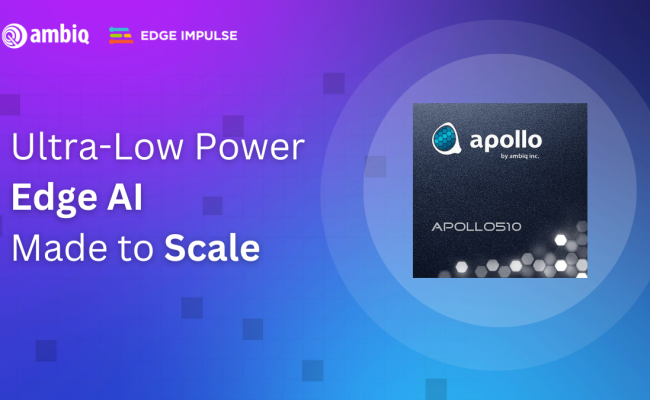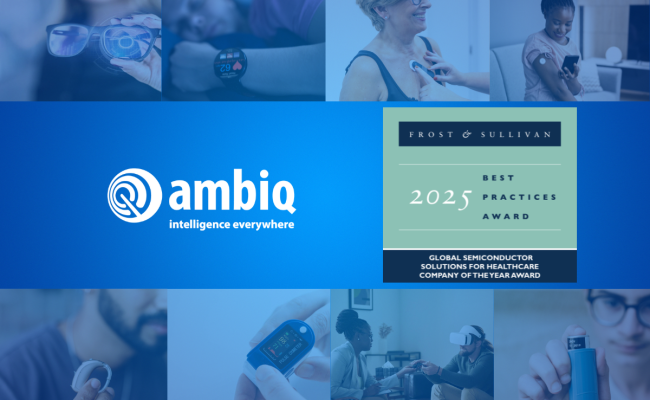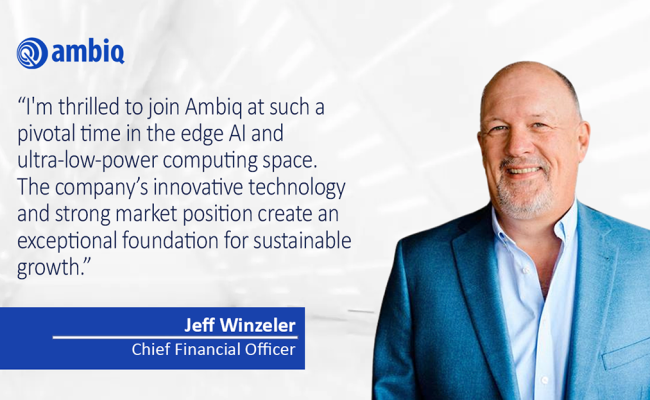
Austin, TX, January 7, 2025 – Ambiq®, a leading developer of ultra-low-power semiconductors and solutions enabling edge AI, today announced a technological breakthrough for over-the-counter (OTC) hearing aids by implementing groundbreaking AI-powered speech enhancement technology using the latest Apollo510 microcontroller (MCU).
Ambiq provides a significant leap for hearing-assist devices by addressing long-standing challenges through advanced neural network real-time processing. Powered by Ambiq’s Apollo510 and neuralSPOT® AI Deep Learning solutions, OTC hearing aids deliver unprecedented speech clarity and noise reduction through innovative on-device audio processing.
Key technological features include:
- Neural Network Speech De-Noiser (NNSD) is a real-time advanced deep learning model that analyzes audio to isolate speech and remove distracting background noise to improve user experience.
- Neural Network Acoustic Environment Detection (NNAED), a highly sensitive deep-learning AI model that identifies subtle acoustic queues to adjust audio processing based on the user’s environment dynamically
- Advanced Adaptive Audio Software Processing leverages AI to provide a clear and crisp audio experience
- Personalized sound settings adjusted by the user’s habits and preferences
- Extended battery life for uninterrupted use throughout the day
The OTC hearing aids apply Ambiq’s sophisticated AI models to improve the user’s listening experience by using deep-learning neural networks to remove background noise and identify acoustic environments. The acoustic scene detector is particularly powerful as it tunes the slight nuances in audio that often exceed the human ear’s ability to distinguish between acoustic environments. Ambiq’s extremely power-efficient compute capabilities made these AI features possible, representing a new milestone in AI sophistication for hearing aids.
“By radically reducing the power needs of the highly complex audio processing and AI features required by advanced hearing aids, Ambiq has eliminated the need for specialized and expensive ASICs, accelerating product cycles while reducing costs,” said Carlos Morales, Vice President of AI at Ambiq. “Using our cutting-edge AI technology to improve sound quality, we can make OTC hearing aids more accessible and practical.”
OTC hearing aids come amid a rapidly expanding market. Since the FDA’s 2022 approval, the market has experienced remarkable year-over-year growth. Despite this growth, high consumer return rates have underscored the need for advanced audio technologies – a gap Ambiq aims to fill with advanced semiconductor technology.
Visit Ambiq’s hearables applications page for more information.
About Ambiq
Ambiq’s mission is to develop the lowest-power semiconductor solutions to enable intelligent devices everywhere and drive a more energy-efficient, sustainable, and data-driven world. Ambiq has helped leading manufacturers worldwide create products that last weeks on a single charge (rather than days) while delivering a maximum feature set in compact industrial designs. Ambiq’s goal is to take Artificial Intelligence (AI) where it has never gone before in mobile and portable devices, using Ambiq’s advanced ultra-low power system on chip (SoC) solutions. Ambiq has shipped more than 270 million units. For more information, visit www.ambiq.com.
Contact
Charlene Wan
VP of Branding, Marketing, and Investor Relations
+1.512.879.2850
Read Article in: Japanese | Simplified Chinese | Traditional Chinese


